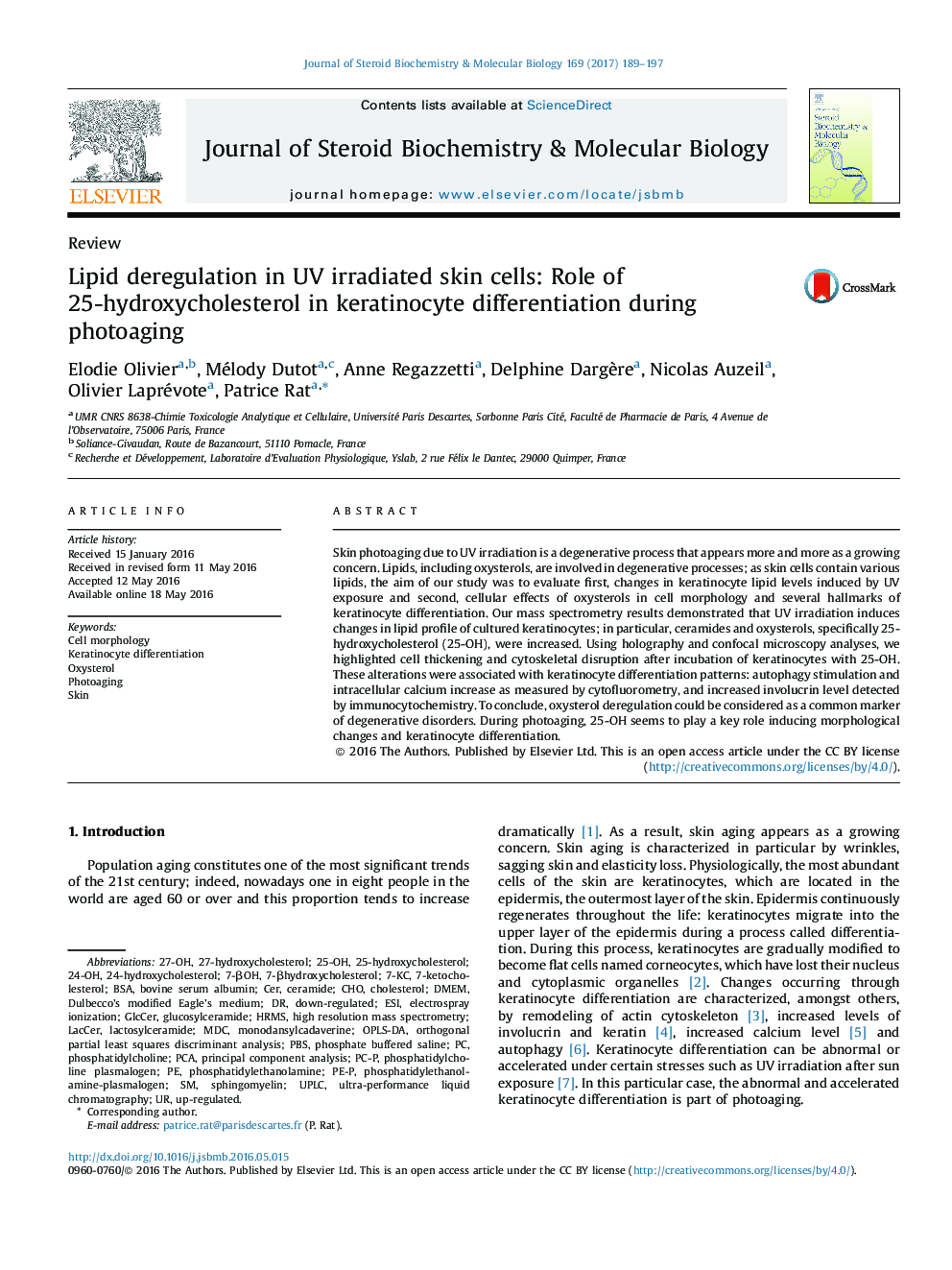| Article ID | Journal | Published Year | Pages | File Type |
|---|---|---|---|---|
| 5513093 | The Journal of Steroid Biochemistry and Molecular Biology | 2017 | 9 Pages |
â¢Single exposition to sunlight UV dose is sufficient to change skin cell lipids.â¢UV irradiation increased ceramides and oxysterols in human keratinocytes.â¢25-OH oxysterol induced the same cellular effects as photoaging.
Skin photoaging due to UV irradiation is a degenerative process that appears more and more as a growing concern. Lipids, including oxysterols, are involved in degenerative processes; as skin cells contain various lipids, the aim of our study was to evaluate first, changes in keratinocyte lipid levels induced by UV exposure and second, cellular effects of oxysterols in cell morphology and several hallmarks of keratinocyte differentiation. Our mass spectrometry results demonstrated that UV irradiation induces changes in lipid profile of cultured keratinocytes; in particular, ceramides and oxysterols, specifically 25-hydroxycholesterol (25-OH), were increased. Using holography and confocal microscopy analyses, we highlighted cell thickening and cytoskeletal disruption after incubation of keratinocytes with 25-OH. These alterations were associated with keratinocyte differentiation patterns: autophagy stimulation and intracellular calcium increase as measured by cytofluorometry, and increased involucrin level detected by immunocytochemistry. To conclude, oxysterol deregulation could be considered as a common marker of degenerative disorders. During photoaging, 25-OH seems to play a key role inducing morphological changes and keratinocyte differentiation.
Graphical abstractDownload high-res image (78KB)Download full-size image
